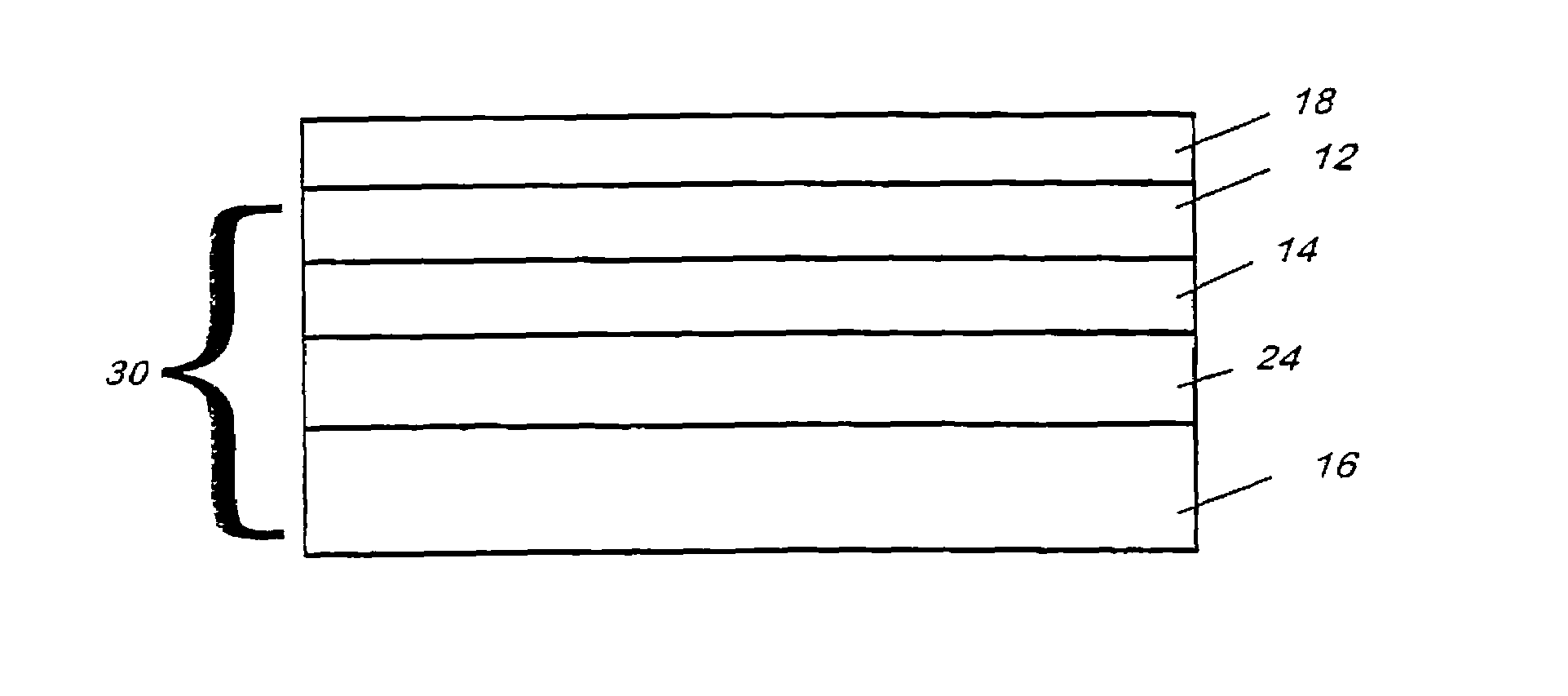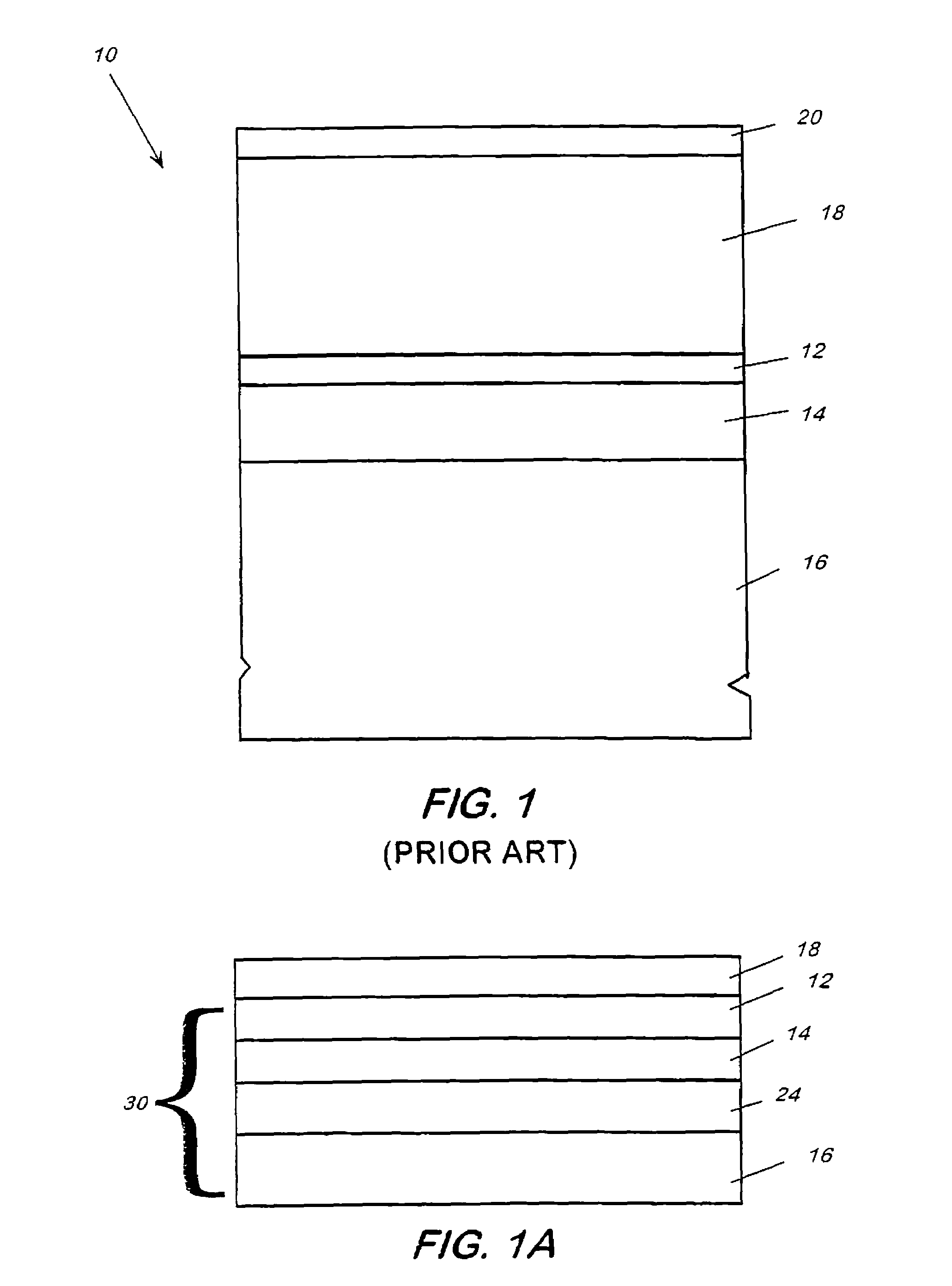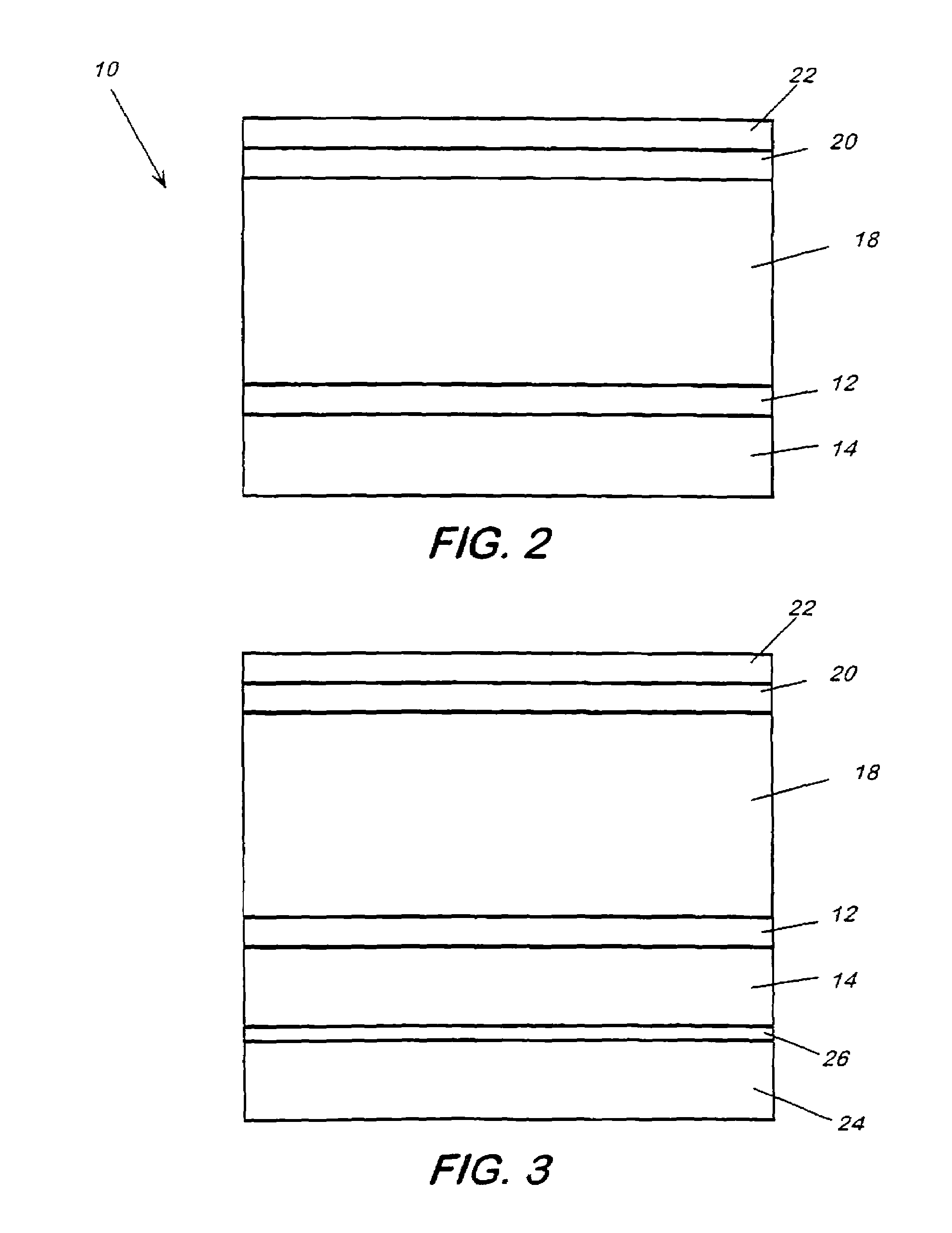Neutron detection device and method of manufacture
a technology of neutron detection and manufacturing method, which is applied in the direction of material analysis, measurement with semiconductor devices, instruments, etc., can solve the problems of false positives, helium-3 filled tubes are delicate, and require careful handling, and achieve low power consumption, increase the sensitivity of the neutron detection device, and the effect of inexpensive design and manufactur
- Summary
- Abstract
- Description
- Claims
- Application Information
AI Technical Summary
Benefits of technology
Problems solved by technology
Method used
Image
Examples
Embodiment Construction
[0028]This application hereby incorporates by reference the application entitled “Semiconductor Substrate Incorporating a Neutron Conversion Layer”, filed on date even herewith, now issued at U.S. Pat. No. 6,867,444. The present invention is directed to a neutron detection device that utilizes a neutron conversion layer in close proximity to charge-sensitive elements such as conventional memory cells. Specifically, the device provides a neutron conversion layer in close proximity to the active semiconductor layer of a charge-sensitive electronic semiconductor device such as a semiconductor memory cell. In particular, the invention will be described with reference to an SRAM memory device formed on a SOI substrate. It will be understood, however, that the invention is not limited to the specifically disclosed embodiment disclosed with reference to silicon devices but may also be realized with other semiconductor materials, and that alpha-emitting neutron converters based on boron and...
PUM
 Login to View More
Login to View More Abstract
Description
Claims
Application Information
 Login to View More
Login to View More - R&D
- Intellectual Property
- Life Sciences
- Materials
- Tech Scout
- Unparalleled Data Quality
- Higher Quality Content
- 60% Fewer Hallucinations
Browse by: Latest US Patents, China's latest patents, Technical Efficacy Thesaurus, Application Domain, Technology Topic, Popular Technical Reports.
© 2025 PatSnap. All rights reserved.Legal|Privacy policy|Modern Slavery Act Transparency Statement|Sitemap|About US| Contact US: help@patsnap.com



